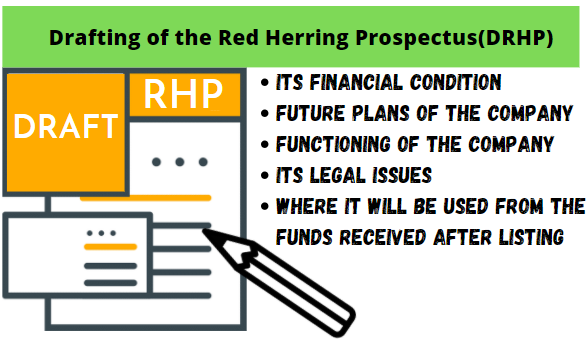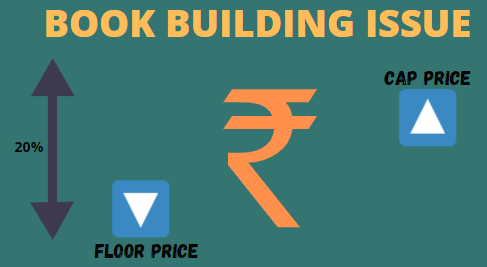Corona pandemic has taught us how important it is to save money and how much trouble we can get if we run out of money in such corona pandemic. That’s why saving or investing money is very important.
As you know that if you want to invest in shares in the stock market, you need to open a Demat account. according to a data it has been told that during the last financial year 2020-2021(also in Pandemic situation ), about 10.7 million new Demat accounts have been opened which is a record in itself.

Table of Contents
So in this blog, we will know how companies are listed in the stock market and what is IPO and IPO Process in India.
What is IPO ?
IPO : IPO stands for Initial Public Offering which refers to the process of converting any private company into a public company. In this process a company list itself on a stock exchange and offers to the public to invest in the company’s shares.
In such a situation, the question arises why the company does this process and what kind of benefit they get from it. When the company needs money for its expansion or needs to pay its debts, they list their company on the stock exchange. By which people and investors are able to buy the shares of the company and the company gets Help to raise money.
In other words you can say that if unlisted company (which is not listed in stock market) wants to start its company from private to public and want to list its stock in stock exchange (NSE and BSE) , then this process is known as INITIAL PUBLIC OFFERING (IPO).
Why IPOs ? Why do Companies offer IPOs?
- For funds raising.
- Expansion of their business.
- To start getting involved in other ventures or different projects.
- Need funds for create infrastructure and diversification in their business.
- Repay debt to maintain the quality of their businesses.
- it Helps to globalize their business.
- Achieve the status of a company that creates credibility in the market.
- Provide liquidity to shareholders.
IPO PROCESS IN INDIA
Now in This Section We will talk about IPO Process In India
So basically the IPO process in India is divided into seven stages. These steps are as follows:-
1.Hiring an Investment Bank

The first step in this process is that the company hires an investment bank or underwriter who has prior IPO experience as well as the industry expertise of an IPO interested company. who provide the following services to the company.
- Studies the current financial scenario of the company.
- Discusses the best solution for the company aspect and makes plans for the future.
- Also discusses with company debt, financiers and partners about Regarding the amount to be raised through IPO, what will be the securities to be issued in this IPO?
- Oversees all compliance and regulatory related matters of IPO and apply for IPO on behalf of that company.
Company can take more than one Underwriter of investment bank services.
2. Registration in SEC (Securities and Exchange Commission )
The company and the underwriter file an application for an IPO after meeting all the required compliance in that application. In this application, the company gives information about its financial condition, the plans for the company and where it will be used from the funds received after listing, functioning of the company and its legal issues. the application goes to the SEC ( Securities and Exchange Commission ).
3.Drafting of the Red Herring Prospectus(DRHP)
After the above process Securities and Exchange Commission will decides whether the application comply with the prescribe terms and conditions if it is okay then they escalate to the further proceeding If the compliance doesn’t match They hold the application and send it back with the comments and the company works on it and comes back again with it and re-files the registration And all the above documents which are involved in this process known as drafting of Red Herring Prospectus (DRHP).

4. SEBI Approval
After approval of the application by the Securities and Exchange Board of India, the company can announce the date of its IPO and the company will apply for issuance on the stock exchange.
5.Road Shows and Buzz Marketing
After the company gets the IPO Approval From SEBI, The company initiates marketing and expands its strategy through media sources. Company executives travel to different cities of the country to promote it along with other partners.

6. Pricing of IPO
After all the above process the investment bank and company decide the price band of the IPO and the IPO is decided in two parts
- FIX PRICE ISSUE
- BOOK BUILDING ISSUE
FIX PRICE ISSUE
In this issue, the investment bank and the IPO issuer company hold a meeting and decide the issue price at which the investor can bid is known as a fixed price issue IPO.
BOOK BUILDING ISSUE
In this issue, the investment bank and the issuer of the IPO decide a price band, Which the investor subscribes before the final price of the shares, which is divided into two parts. One is the Floor Price and the other is the Cap Price. There can be a difference of 20% between the floor price and the book building price.

- Floor Price : The lowest amount in the IPO price band is called the floor price that investors can subscribe to.
- Cap Price: The Maximum amount in the IPO price band is called the Cap Price that investors can subscribe to.
7.Shares Allotment
After fixing the IPO price, the company solicits bids from foreign, retail and institutional investors and maintains a reserve the share quota for the same. IPO bids are opened for 3 days.
After the IPO opens, investors apply and participate in the bidding and when the IPO closes, the bid evaluation takes place and the shares are allotted within 10 days and the shares are allotted to the bidder’s Demat Account.
FAQ
1.How to Buy IPO in INDIA ?
Buying an IPO is as easy as buying shares. But in share you only put money on share and share is yours but in IPO you need to bid to get your share and if you get bid then share becomes yours and if you don’t get bid then Your money is returned to your account.
2. How to Apply IPO Through UPI Online
Step.1: To apply IPO through UPI you need to register your UPI in your respective bank account.
Step.2: Now you have to open your application (Demat account) and fill the IPO form.
Step.3: You will receive a UPI request once your application is processed in your Demat account.
Step.4: After you confirm the UPI request, your IPO amount will be blocked in your bank account.
Step.5: Once the IPO is allotted, your shares will be credited to your demat account on the date of listing otherwise your amount will be credited to your account after the date of allotment.
3. How much can I invest in IPO?
Retail individual investors can apply up to a maximum of Rs 2 lakh.
4.What are the different types of IPO investors?
There are Four Types of investors
1. QIB – Qualified Institutional Bidder
2. NII – Non-Institutional Investor
3. RII – Retail Individual Investor
4. Anchor Investor
5. What is ASBA IPO ?
ASBA stands for Application Supported by Blocked Amount which is an IPO Application Process developed BY SEBI. in this process IPO amount will be blocked in your bank account. Once the IPO is allotted, your shares will be credited to your demat account on the date of listing otherwise your amount will be credited to your account after the date of allotment.
6.Different ways to earn money in stock market.
1. ON SHARE: earn money from stock market when the price is high.
2. DIVIDEND : Get money from dividends that many companies offer from time to time.
3. IPO : Get money when the IPO gets the highest listing Price.
That’s all!! Hope you know what is IPO. Please comment if you like or have any questions join us on EInfonet . Please note that all the above information collected from the Internet.

3 thoughts on “What is IPO ? Step-by-step IPO Process in INDIA | How to Buy IPO in INDIA”